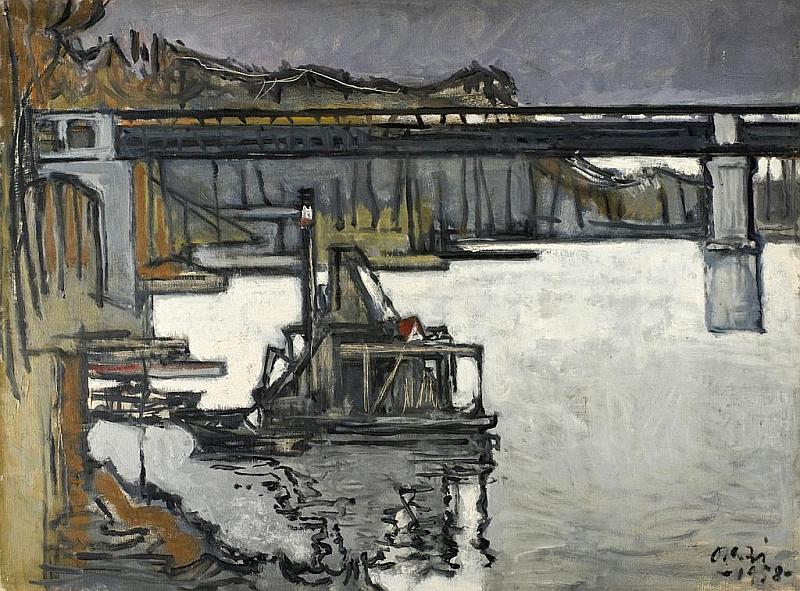Orazi
ORAZI born in 1906 and died in 1979, was a painter of the French School and member of the new School of Paris.
After classical studies, literary and musical, he starts painting.
In 1934, ORAZI installs his workshop in Montparnasse where he will work until the end of his life. He participates in the intense intellectual life of this Parisian district that became the meeting point of new artistic ideas since the 20’s.
In 1937, he exhibited at the Galerie de Paris and in 1937-1938 at the First and Second Salon of Young Artists in a gallery of Faubourg Saint-Honoré. ORAZI became one of the historic members of the Paris Salon de Mai, since its foundation as well as member of the painting section of the Salon d'Automne. ORAZI is closely linked to Édouard Pignon in the entourage of the new Paris School since 1946.
ORAZI’s work goes from the figurative to the informal and the relief painting to return to the figurative in its very last period. His exhibitions in France, Europe, Mexico and Japan are the subject of catalogs and articles from 1934 to 1979. There were also in memoriam exhibitions in 1980, then in 2003 and 2005-2006.
The works of the period from 1934 to 1948 are still lifes, landscapes, portraits, compositions that clearly show the distinctive elements of his painting, characterized by a link with the historical avant-garde as well as the major names of the French post-impressionist art.
From the end of the 1940s, ORAZI’s artistic career had an original development. His Painting of the Movement, around 1947-1956, evokes the interest of the press of the time by his dynamic and plastic effects. The prestigious cultural journal "Les Lettres Françaises", founded in 1942 by Jacques Decour and Jean Paulhan, and directed first by Claude Morgan then by Louis Aragon, publishes his works: the series of his circus characters, clowns, riders, ballerinas, athletes that was exhibited at the Salon de Mai from 1950 to 1952, at the Biennale de Menton and at the Salon d'Automne of 1953, at the Marcel Bernheim Gallery in Paris in 1954, and his paintings inspired by the film "Rome open city" from director R. Rossellini, exhibited at the Salon de Mai in 1950 and the Salon d'Automne in 1951 and 1952.
Attention to the landscape is a constant in ORAZI’s work. In the 50’s he focused on the Mediterranean and American nature but especially on Paris. A Paris that changes and that, in the name of a sometimes violent modernity, saw disappear some of its historical features. The paintings of Parisian Landscapes (or Parisian Cycle) were born with essentially melancholy: views of Montparnasse where large sections of houses and small streets inhabited by artists were cut down but especially the banks of the Seine in these new neighborhoods bristling with building sites and cranes that contrast with the moored barges, symbols of the past.
In some of these landscapes the line distilled the forms, the color took an essential place in the physical representation: the artist already prepared his informal period on which he worked since the end of the 50’s. However, his creativity remained anchored in his need to work on plasticity and its Relief Painting (or Painting of Matter) fully revealed the mastery of technical means. The works of this phase, from 1958 to 1968, were presented at various Salon de Mai, including one in Tokyo, and the individual exhibitions of 1961 and 1966.
The research on the color and the surprising ORAZI’s imagination found a striking expression in his last pictorial periods: the Circular Line where he represents the celestial landscapes and the trajectories of the planets and the figurative views of his Landscapes of the Imaginary.
ORAZI’s Facebook Page





